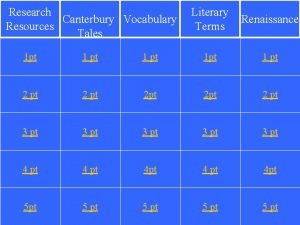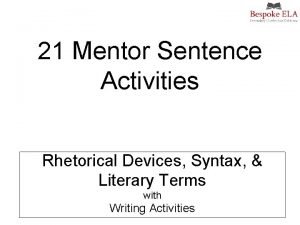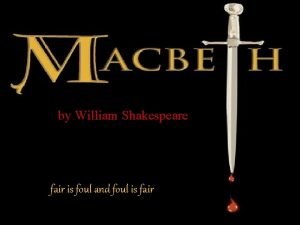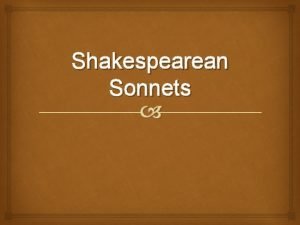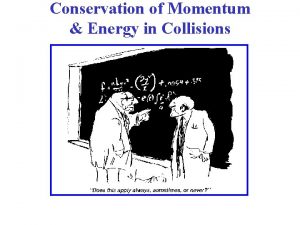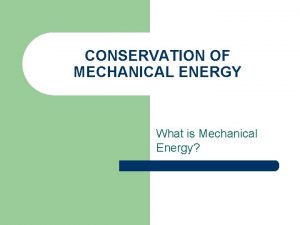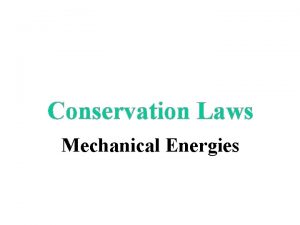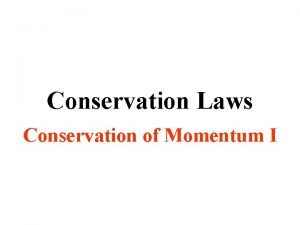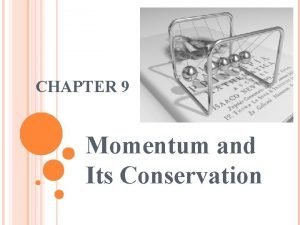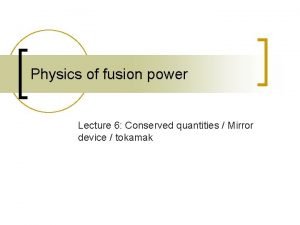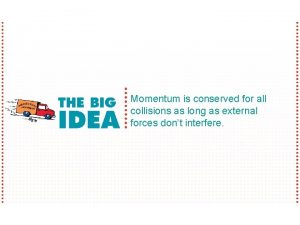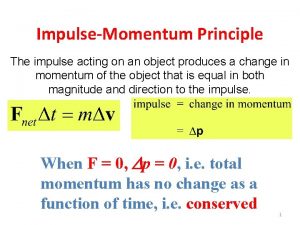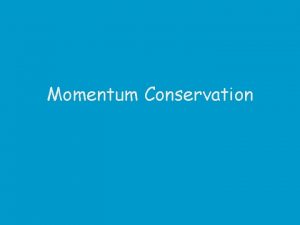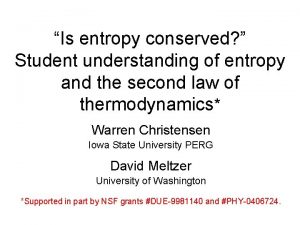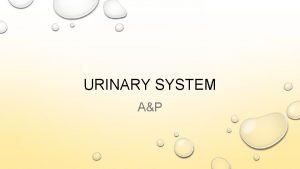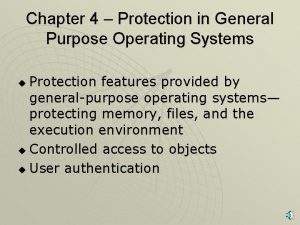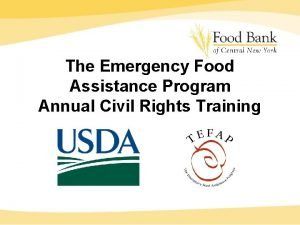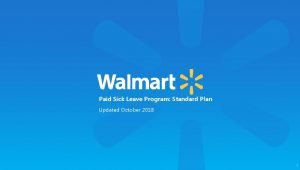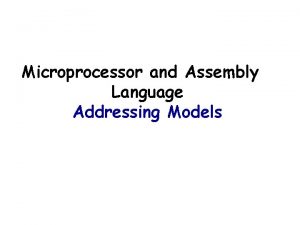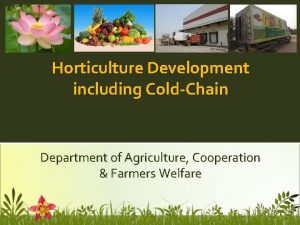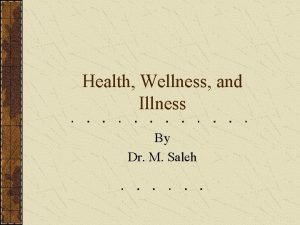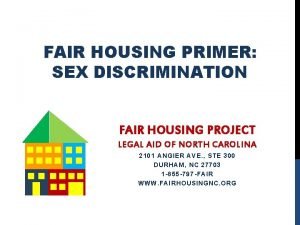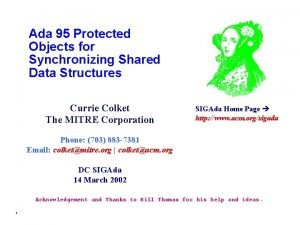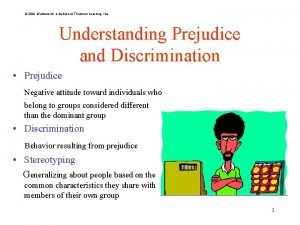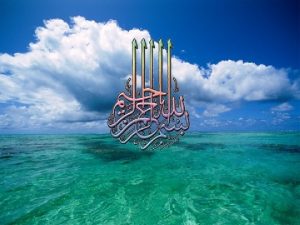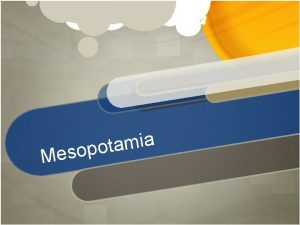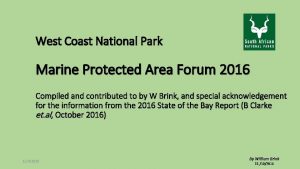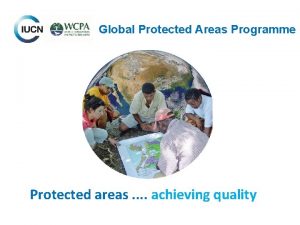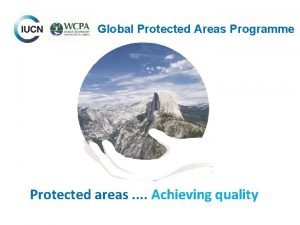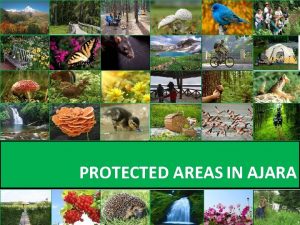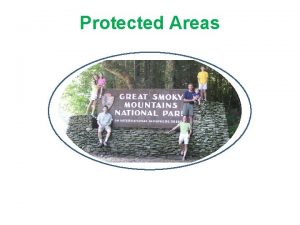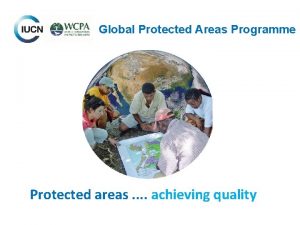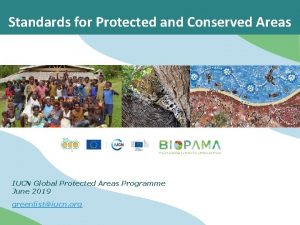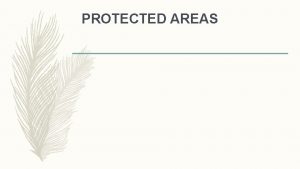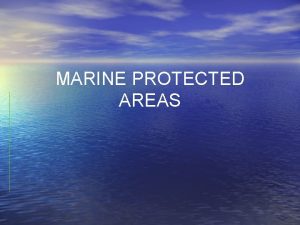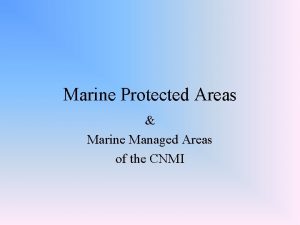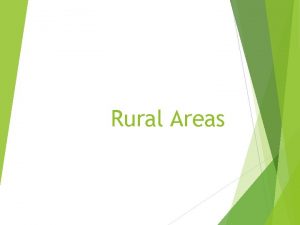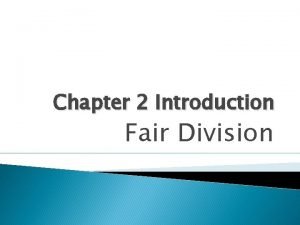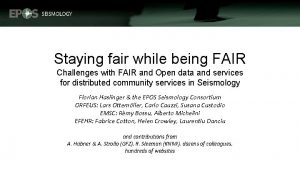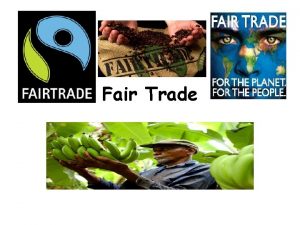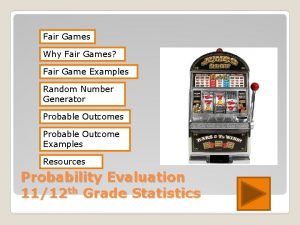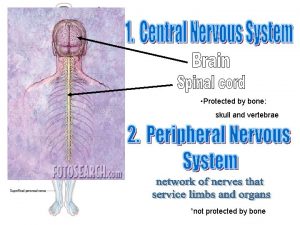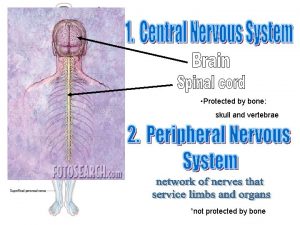Fair and effective protected and conserved areas 2010



































- Slides: 35

Fair and effective protected and conserved areas

2010 COP 10 Decision X/2 Strategic Plan for Biodiversity 2011 -2020 Target 11: By 2020, at least 17 per cent of terrestrial and inland water areas, and 10 per cent of coastal and marine areas, especially areas of particular importance for biodiversity and ecosystem services, are conserved through effectively and equitably managed, ecologically representative and well connected systems of protected areas and other effective area-based conservation measures, and integrated into the wider landscapes and seascapes. 2


especially areas of particular importance for biodiversity and ecosystem services …. 2. 1 Identify major site values 2. 2 Design for longterm conservation 2. 3 Understand threats and challenges 2. 4 Understand social and economic context

The IUCN Red List of Threatened Species™ Coverage Contains assessments for 91, 523 species. By 2020 it contains 160, 000 species so that The IUCN Red List becomes a ‘Barometer of Life’ 5

KBA Partnership and Standards • First time conservation community has agreed on a common approach to identifying sites • Identification of the most important sites globally for conservation • Sites that make significant contributions to the global persistence of biodiversity

… effectively managed …. 3. 1 Long-term management plan 3. 2 Manage ecological conditions 3. 3 Manage within social and economic context 3. 4 Manage threats 3. 5 Effectively enforce laws 3. 6 Manage access and use 3. 7 Measure success

The IUCN - WCPA PAME Framework

A range of diagnostic tools being applied METT+ Eo. H IMET

…. equitably governed. . 1. 1 Guarantee legitimacy and voice 1. 2 Achieve transparency and accountability 1. 3 Enable governance vitality and capacity to respond adaptively

Governance diversity: 4 governance types Type 1 • Governance by single sector entity/government Type 2 • Shared governance • Transfrontier, multi party governing bodies Type 3 • Private governance • Land owners, NGOs, religious groups, for-profit entities. . Type 4 • Governance by Indigenous peoples and communities • (e. g. ICCAs) • From national to local levels



…. integrated into the wider landscape and seascape


IUCN Standards and knowledge: Competence standards for protected area professionals Defining the essential competences, through body of knowledge, learning, assessment and qualifications

2018 COP 10 Decision 14/8 • Recognition is about acknowledging and respecting rights and the diversity of identities, knowledge systems, values and institutions of different actors. • Procedure is about participation of actors in decision making, transparency, accountability, and processes for dispute resolution. • Distribution is about the allocation of benefits across the set of actors, and how costs/burdens experienced by some actors are mitigated.

COP 14 adopts the definition of other effective area-based conservation measures, as well as criteria for their identification based on IUCN WCPA guidance, and voluntary guidance on mainstreaming, governance and equity Requests IUCN and UNEP-WCMC to incorporate these “OECMs” into the World Database on Protected Areas

Effective area-based conservation measures Other PAs Outcome is conservation even if objective is something else Primary objective is conservation

Other …. . effective area-based SPECTRUM OF OECMs conservation measures Achieves the in situ conservation of biodiversity - Sacred natural sites - Military areas - War graves More intention to conserve biodiversity - Areas that are protected through very low-impact use - Watershed protection areas - Medicinal plants sustainable use areas Primary - ‘No-disturbance’ areas Secondary Ancillary Less intention to conserve biodiversity - ICCAs or privately governed areas with a primary conservation objective…. . . but the governance authority is unable to secure PA designation or prefers not to be recognised as a PA

… well connected • Namibia: 34 protected areas, 159, 000 km 2 • Conservancies: 112 additional conserved areas, add 164, 000 km 2 Protected and Conserved Areas Coverage Protection of Ecoregions

The IUCN Green List of Protected and Conserved Areas • A VOLUNTARY mechanism for raising the bar in protected and conserved areas • Applies to protected AND CONSERVED AREAS • A means to MEASURE conservation outcomes. • Identify CAPACITY needs and link to INVESTMENT and impacts IUCN GREEN LIST MISSION To increase and recognize the number of Protected and Conserved Areas globally that are fairly governed, effectively managed, and 22 achieving their conservation outcomes

The IUCN Green List Global Standard

2016 CBD COP Decision 13/2: Parties to “ promote the IUCN Green List of Protected and Conserved Areas as a voluntary standard to encourage protected area management effectiveness” 2017 IUCN Council: Approval of Green List Standard Version 1. 1

INTERNATIONAL UNION FOR CONSERVATION OF NATURE

ASSURANCE • ISEAL Codes of Practice • Accreditation Services International (ASI) • Independent Reviewer assigned to each jurisdiction • Compatibility with other programmes (FSC, Blue Flag, GSTC)

• 15 new sites from 8 countries admitted in Nov 2018 at COP 14 in Egypt + 6 more new sites admitted in March 2019 • A total of 46 sites from 14 countries now listed • User Manual Version 1. 2 released incl. new Terms of Reference for WCPA RVCs • 35 countries committed; 18 Trained EAGLs; 300+ Candidate Sites


The Main Ras Mohammed peninsular area is managed as a tourism concession by the Bedouin community. Some areas are completely no access MAP: RAS MOHAMMED NATIONAL PARK The marine area of 34, 500 ha is a no-take area for fishing. Artisanal fishing is permitted in Nabq MPA, adjacent, north. No development is allowed in the RM coastal zone or Tiran-Sanafer islands. The yellow zone is the Sharm El Sheikh municipal zone where limited coastal development is allowed with permits.

SITE: RAS MOHAMMED NATIONAL PARK CRITERION ADAPTED INDICATORS (MIDDLE EAST) STATUS 1. 1 GUARANTEE LEGITIMACY AND VOICE 1. 1. 1 GOVERNANCE STRUCTURE IS DEFINED 1. 1. 2 GOVERNANCE MECHANISMS ENGAGE STAKEHOLDERS 1. 1. 3 RIGHTS OF INDIGENOUS AND LOCAL COMMUNITIES 1. 1. 4 STAKEHOLDER ROLES IN DECISION-MAKING 1. 1. 5 GOVERNANCE MECHANISMS HELP ADVANCE GENDER EQUITY 1. 1. 6 GOVERNANCE MECHANISM ARE ACCEPTED BY STAKEHOLDERS 1. 2. 1 GOVERNANCE AND MANAGEMENT DOCUMENTS ARE AVAILABLE TO PUBLIC 1. 2. 2 MANAGEMENT APPOINTMENTS AND FIGURES ARE PUBLIC KNOWLEDGE 1. 2. 3 OUTCOMES OF MANAGEMENT DECISIONS ARE PUBLICLY AVAILABLE 1. 2. 4 READILY AVAILABLE GRIEVANCE MECHANISMS ARE IN PLACE 1. 3. 1 GOVERNANCE IS ADAPTIVE TO RESULTS FROM MONITORING 1. 3. 2 PLANNING AND DECISION-MAKING IN THE CONTEXT OF NATIONAL LAWS 1. 3. 3 PLANNING AND DECISION-MAKING DRAWS ON MULTIPLE KNOWEDGE SOURCES 1. 3. 4 SITE PLANNING CONSIDERS HISTORICAL EVENTS AND FUTURE PROJECTIONS 2. 1. 1 THE SITE MEETS THE IUCN DEFINITION OF A PROTECTED AREA / CONSERVED AREA 2. 1. 2 CORRECT IUCN PA CATEGORY 2. 1. 3 MANAGEMENT PLAN OR EQUIVALENT 2. 1. 4 NATURAL VALUES AND ECOSYSTEM SERVICES AND CULTURAL VALUES IDENTIFED 2. 2. 1 SITE IS LARGE ENOUGH AND SUFFICIENTLY WELL-CONNECTED 2. 2. 2 THE SITE IS PART OF AN IDENTIFIED CONSERVATION NETWORK 2. 2. 3 DESIGN FOR ECOLOGICAL INTEGRITY 2. 3. 1 THREATS TO MAJOR VALUES ARE IDENTIFIED AND UNDERSTOOD 2. 3. 2 LIKELY CLIMATE CHANGE IMPACTS ARE UNDERSTOOD FULLY MET FULLY MET FULLY MET FULLY MET FULLY MET 2. 4. 1 UNDERSTAND POTENTIAL SOCIAL AND ECONOMIC IMPACTS 2. 4. 2 POTENTIAL SOCIAL AND ECONOMIC IMPACTS ARE ADDRESSED IN MANAGEMENT PLANNING 3. 1. 1 THE SITE HAS A CURRENT MANAGEMENT PLAN OR EQUIVALENT FULLY MET + conditions 3. 1. 2 DEMONSTRATE MANAGEMENT ACTIVITIES ARE IMPLEMENTED 3. 1. 3 ADEQUATE, FUNCTIONAL, SAFE INFRASTRUCTURE AND EQUIPMENT 3. 1. 4 TRAINED STAFF AND EFFECTIVE MANAGEMENT TEAM 3. 1. 5 MANAGEMENT EFFORTS SUPPORT EQUITY, INCLUDING GENDER 3. 1. 6 FINANCIAL CONSTRAINTS DO NOT THREATEN SITE MANAGEMENT FULLY MET MET + conditions 1. GOOD GOVERNANCE 1. 2 ACHIEVE TRANSARENCY AND ACCOUNTABILITY 1. 3 ENABLE GOVERNANCE VITALITY AND CAPACITY TO RESPOND ADAPTIVELY 2. SOUND DESIGN AND PLANNING 2. 1 IDENTIFY AND UNDERSTAND MAJOR SITE VALUES 2. 2 DESIGN FOR LONG-TERM CONSERVATION 2. 3 UNDERSTAND THREATS AND CHALLENGES 2. 4 UNDERSTAND SOCIAL AND ECONOMIC IMPACT 3. EFFECTIVE MANAGEMENT 3. 1 DEVELOP AND IMPLEMENT LONG-TERM MANAGEMENT STRATEGY FULLY MET MET, BUT COULD EE IMPROVED: SEE EAGL STATEMENT BELOW 3. 2. 1 STRATEGIES IN PLACE TO MAINTAIN ECOLOGICAL PROCESSES 3. 2. 2 IMPLEMENT MANAGEMENT ACTIVITIES RELATED TO NATURAL VALUES FULLY MET 3. 3. 1 SOCIAL AND ECONOMIC CONTEXT INCORPORATED INTO MANAGEMENT 3. 3. 2 OPPORTUNITIES TO ENHANCE SOCIAL AND ECONOMIC BENEFITS ARE CONSIDERED 3. 4. 1 MANAGEMENT WORK PROGRAMME RESPONDS TO THREATS FULLY MET FULLY MET 4. 2 ECOSYSTEM SERVICES 3. 5. 1 PATROL AND SURVEILLANCE SYSTEMS IN PLACE 3. 5. 2 LEGAL REGULATIONS FAIRLY APPLIED 3. 5. 3 LAWS AND REGULATIONS ARE PUBLICLY AVAILABLE 3. 6. 1 TYPES AND LEVELS OF PERMITTED ACTIVITIES ARE DESCRIBED AND COMPATIBLE 3. 6. 2 APPROPRIATE USE AND ACCESS IS MANAGED TO MINIMISE IMPACTS 3. 6. 3 VISITOR ACCESS IS DESCRIBED AND COMPATIBLE 3. 6. 4 IMPACTS OF VISITOR ACCESS ARE MINIMISED 3. 7. 1 MONITORING OF MAJOR SITE VALUES 3. 7. 2 THRESHOLDS FOR SUCCESS ARE IN PLACE FOR MAJOR SITE VALUES 4. 1. 1 SITE MEETS OR EXCEEDS THRESHOLDS FOR MAJOR NATURAL VALUES 4. 1. 2 EAGL RECOGNISES CHALLENGING EXTERNAL CONTEXT 4. 2. 1 SITE MEETS OR EXCEEDS THRESHOLDS FOR ECOSYSTEM SERVICES 4. 3 CULTURAL VALUES 4. 2. 2 ECOSYSTEM SERVICE PROVISION DOES NOT PREJUDICE OTHER NATURAL VALUES 4. 3. 1 SITE MEETS OR EXCEEDS THRESHOLDS FOR MAJOR CULTURAL VALUES 3. 2 MANAGE ECOLOGICAL CONDITION 3. 3 MANAGE SOCIAL AND ECONOMIC CONTEXT 3. 4 MANAGE THREATS 3. 5 ENFORCE REGULATIONS 3. 6 MANAGE ACCESS, RESOURCE USE AND VISITATION 3. 7 MEASURE SUCCESS 4. SUCCESSFUL CONSERVATION OUTCOMES FULLY MET EAGL COMMENT (INDICATORS & CRITERION) 4. 1 NATURAL VALUES FULLY MET MET + Conditions FULLY MET MET + conditions MET, BUT COULD EE IMPROVED: SEE EAGL STATEMENT BELOW MET, BUT COULD BE IMPROVED: SEE EAGL STATEMENT BELOW FULLY MET

RAS MOHAMMED NATIONAL PARK VALUES – OUTCOME TABLE SITE INDICATORS KEY EVIDENCE LINKS: MAJOR SITE VALUES 1. NATURAL VALUES MONITORING OF VALUES THRESHOLDS OF SUCCESS CONDITION OF VALUES CORAL REEF: Detailed coral reef transect monitoring at 22 key sites within RMNP, measure species diversity (n), live cover (%). Also remote sensing of 60 km reef. Crown of Thorns (Co. T)– RMNP protocols plus citizen science and NGO-supported M&E activities link. Fisheries diversity and abundance – studies within / out RMNP and at 22 key sites monitor invertebrates and fish, with key indicator species (ie butterfly fish) as well as studies on commercial species. At each key site: maintain stable or increasing species diversity; live coral cover; and key indicator species (invert / vertebrates, inc. butterfly fish); or minimal decreases at specific sites where this is offset by mean increases overall across 22 sites. Current reef quality is in good condition with average living cover diversity of 80% in most key sites. The highest coral cover recorded in shark observatory with 90% coral cover. The condition is better than the unprotected reef sites outside the control of the MPA. Bleaching in all sites is less than c 10% and coral recruitment and survival rates are significantly high. Previous Co. T events have not peaked the serious impacts of 2002 – which by 2005 had already shown good recovery. BIRDS: 240 species recorded. White stork migration of key significance. Annual monitoring during migration Aug-Oct. Bird observation sites and hides in place. Presence of all resident species – at least 80 species observed per year; white stork migrants at least 150 k individuals per year, preferably above 250 k. No incidence of oil-spill deaths of birds. Seabird colony area stable, ratio of species and abundance is stable. Bird diversity remains stable in 2017. 2018 Stork migration over 180, 000 individuals estimated to date. Seabird colonies stable. No oil-related bird deaths recorded. White Stork migration numbers are stable, but lower than in previous years. More access to flyway data from Eastern Europe / Anatolia would help RMNP better determine thresholds. No Co. T outbreaks beyond low density encounters SEA TURTLES: Main beaches monitored for nesting turtles and hatchling success. Any illegal access recorded. 2. ECOSYSTEM SERVICE VALUES 3. CULTURAL VALUES Reef sensitivity and zoning plan 2017 SUMMARY OF TRENDS AND RESULTS Overall coral health is very good, with minor bleaching events recovering well with high recuperation. No Co. T outbreaks. Fish diversity and abundance remains high. Protection is effectively maintaining coral reef values, compared to areas adjacent and outside the MPA, and the 35 years of protection to date has clearly had a conservation impact. Green Turtle nesting occurs at each site to at least 100% of ten-year average, for a greater than 120 nests per season total; Hawksbill turtle nests at greater than 30/season for all monitored beaches. FISH PRODUCTIVITY: RMNP is a complete no- At each key site: maintain stable or increasing key take zone. Adjacent zones have managed indicator species (invert / vertebrates, inc. lutjanus and artisanal and commercial fisheries that holothura); or record minimal decreases where this is benefit from RMNP productivity (reefs, offset by increases overall across 22 sites. mangroves, seagrass). Reef transect monitoring includes data on commercial species such as lutjanus spp. Turtle nesting beaches in stable condition. Three marine turtle species recorded in Nesting numbers stable yet species-specific RMNP waters and nesting success is monitoring unavailable since 2011. stable. New turtle hatchery support to begin in 2019 with project funds (GEF) Key commercial fisheries species numbers RMNP demonstrates continued are stable within the RMNP. Recent studies conservation of commercial resources demonstrate that connectivity with for wider Red Sea-based fisheries. adjacent marine zones – including artisanal Bedouin fisheries in the contiguous Naqba MPA – provides overspill of key fishery resources. MANGROVE NURSERIES: Avicennia The total area of A. Marina is stable or increasing – ie not falling below 80 hectares and increasing to 100 ha by 2023 through restoration. Future estimates should provide an increase on the 0. 03 Mt sink of CO postulated in 2018. Mangrove areas are in good condition and increasing in area (5 ha since 2007). Mangrove conservation and integrity is providing CO 2 sink benefits and contributes to the health of fish and invertebrate species, as demonstrated for key natural values (4. 1. 1) Bedouin custodians are satisfied that their cultural heritage areas within RMNP are a) accessible to community members b) restricted outsiders and c) maintaining integrity and good condition. At least 1, 000 visits per month to centre; continued ratio of 4. 5 stars or 90% positive reviews for diving tours and camping. All negative reviews are responded too / dealt with by management. Feedback in 2018 (including through GL consultation and site-visit dialogue) demonstrates good condition of values and satisfaction of traditional owners. Education facilities are in good condition and operating well. Visitor feedback shows good experience = 92. 5% positive (5, 567 4* or 5* feedback by 1 st Nov 2018) Heritage sites are intact and in good condition, as reported by Bedouin custodians. Marina areas are monitored remotely for coverage and through site-based assessment for health and integrity. CO 2 estimates use standard methodologies. BEDOUIN CULTURAL HERITAGE: Cultural Heritage sites (especially on RM peninsular and beaches) monitored by reps of Bedouin community as part of concession. EDUCATION AND VISITOR EXPERIENCE: Number of visitors to Visitor Centre and feedback on exhibition operations; trip advisor rating for RMNP diving experiences. Visitor experience and education improve with higher impacts every year between 2012 and 2018. New Visitor centre 2018.

IUCN Green List of Protected and Conserved Areas


All areas of particular importance Effective areabased conservation measures Connected Effectively managed Integrated into wider landscape and seascape Equitably governed Post-2020 Set measurable targets for each

Opportunity to roll this out in the 79 Africa, Caribbean and Pacific Group of States
 Foul is fair and fair is foul literary device
Foul is fair and fair is foul literary device Onomatopoeia in macbeth
Onomatopoeia in macbeth Foul is fair and fair is foul
Foul is fair and fair is foul Syntax literary devices
Syntax literary devices Fair is foul and foul is fair significato
Fair is foul and foul is fair significato Examples of fair is foul and foul is fair in macbeth
Examples of fair is foul and foul is fair in macbeth Sonnets 14 lines
Sonnets 14 lines When is mechanical energy conserved
When is mechanical energy conserved Momentum is conserved
Momentum is conserved Common velocity after collision formula
Common velocity after collision formula Starting from rest a child zooms down
Starting from rest a child zooms down Law of conservation of mechanical energy
Law of conservation of mechanical energy Momentum is conserved
Momentum is conserved Conservation of momentum
Conservation of momentum Magnetic field drift
Magnetic field drift Is momentum conserved in all collisions
Is momentum conserved in all collisions The impulse acting on an object is equal to the
The impulse acting on an object is equal to the Conservation of linear momentum
Conservation of linear momentum Gravitational kinetic energy
Gravitational kinetic energy Is entropy conserved
Is entropy conserved Difference between real mode and virtual mode of 80386
Difference between real mode and virtual mode of 80386 The kidneys are protected by the ribs and a cushion of fat
The kidneys are protected by the ribs and a cushion of fat Protected objects and methods of protection
Protected objects and methods of protection Federally protected classes
Federally protected classes Uml class diagram inner class
Uml class diagram inner class Psl meaning walmart
Psl meaning walmart Protected mode memory addressing
Protected mode memory addressing Scope of protected cultivation
Scope of protected cultivation Emergent high-level wellness
Emergent high-level wellness Federally protected classes
Federally protected classes Civil rights training quiz answers
Civil rights training quiz answers Ada protected object
Ada protected object Federally protected classes
Federally protected classes Protected weight bearing
Protected weight bearing Which landforms protected the cities from invasions?
Which landforms protected the cities from invasions? West coast national park marine protected area
West coast national park marine protected area
